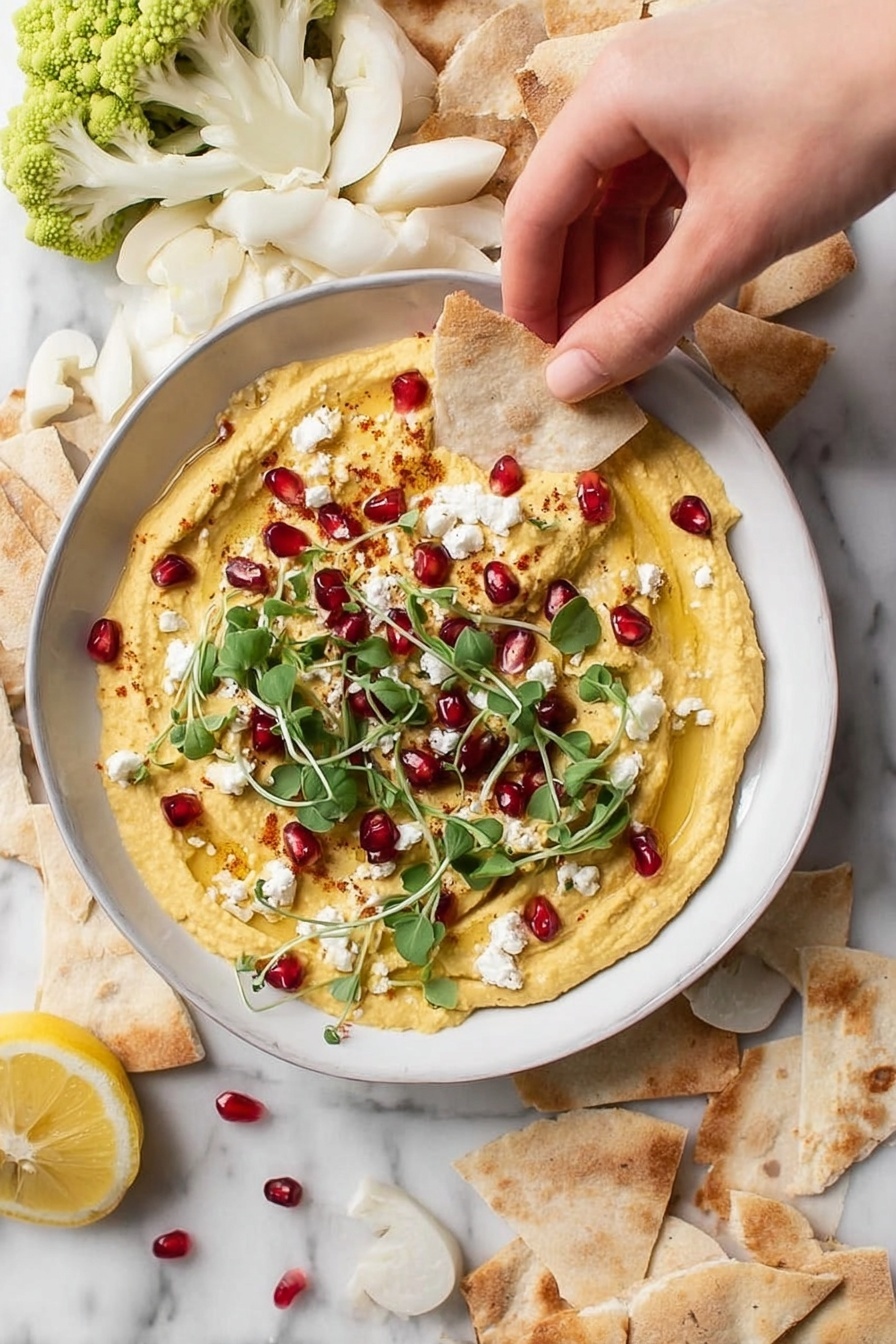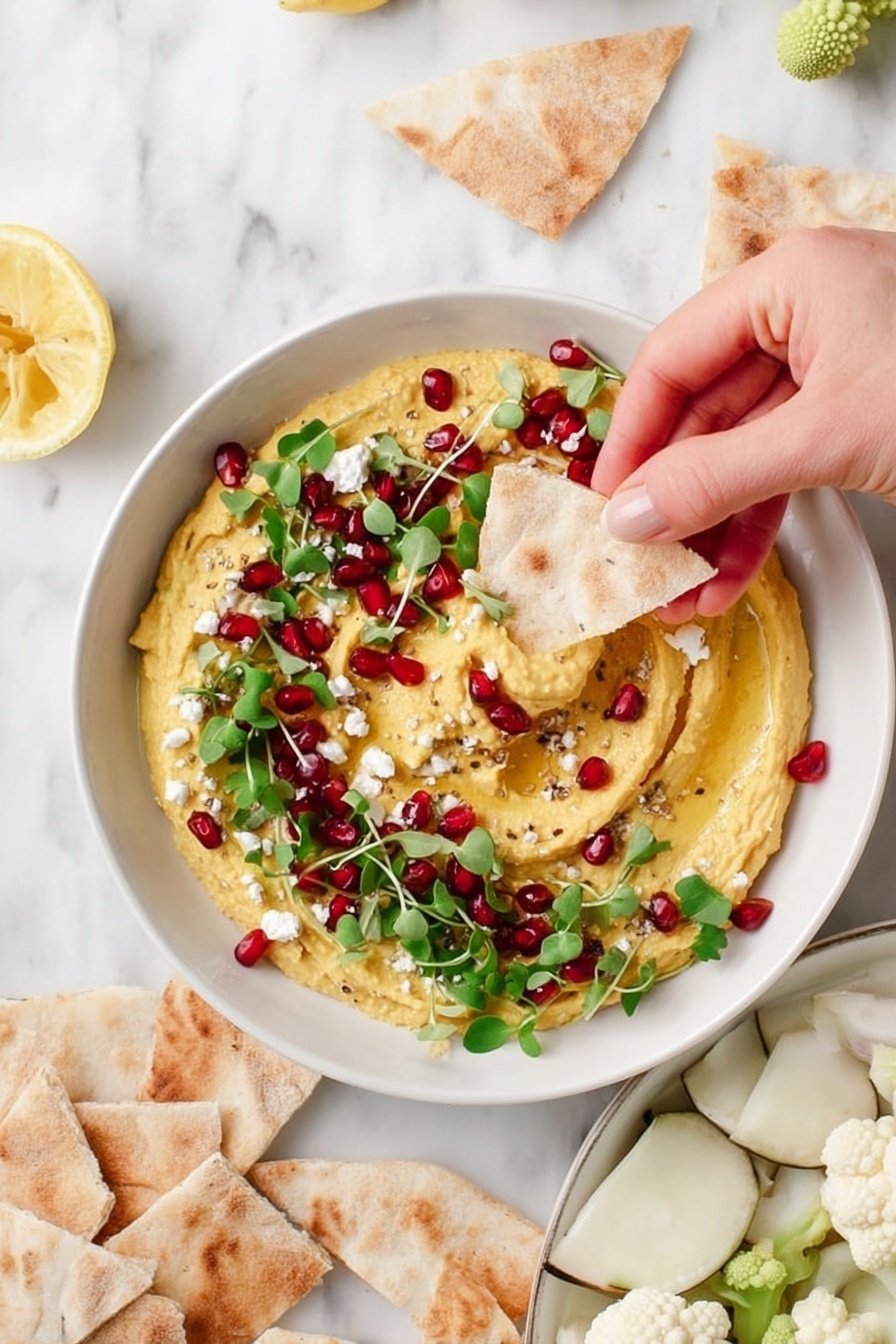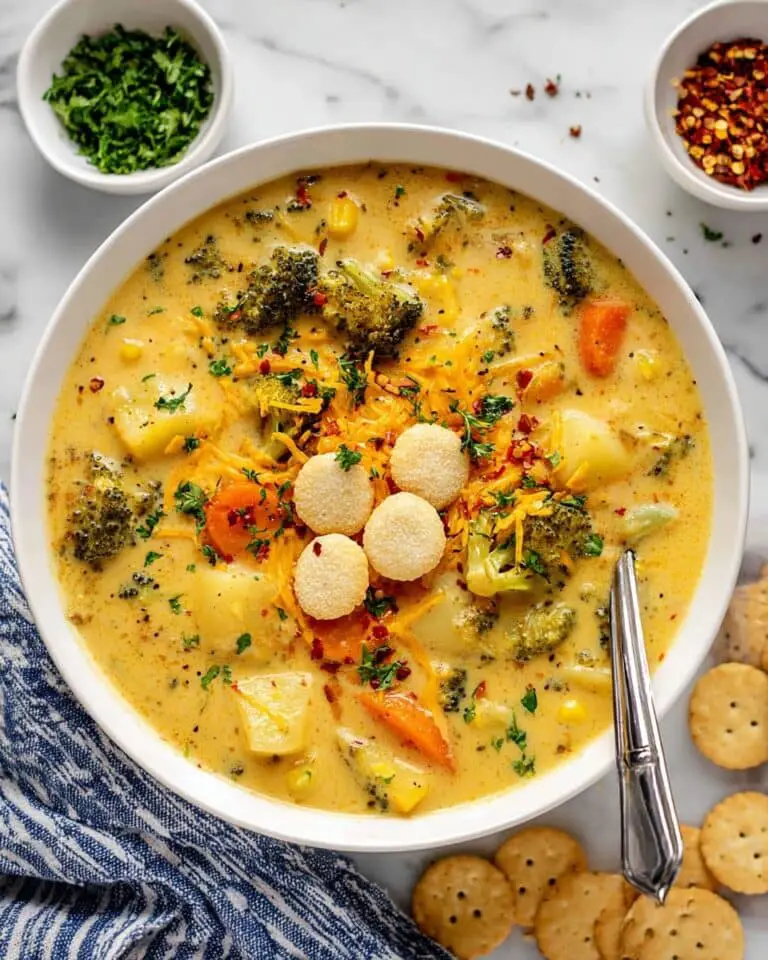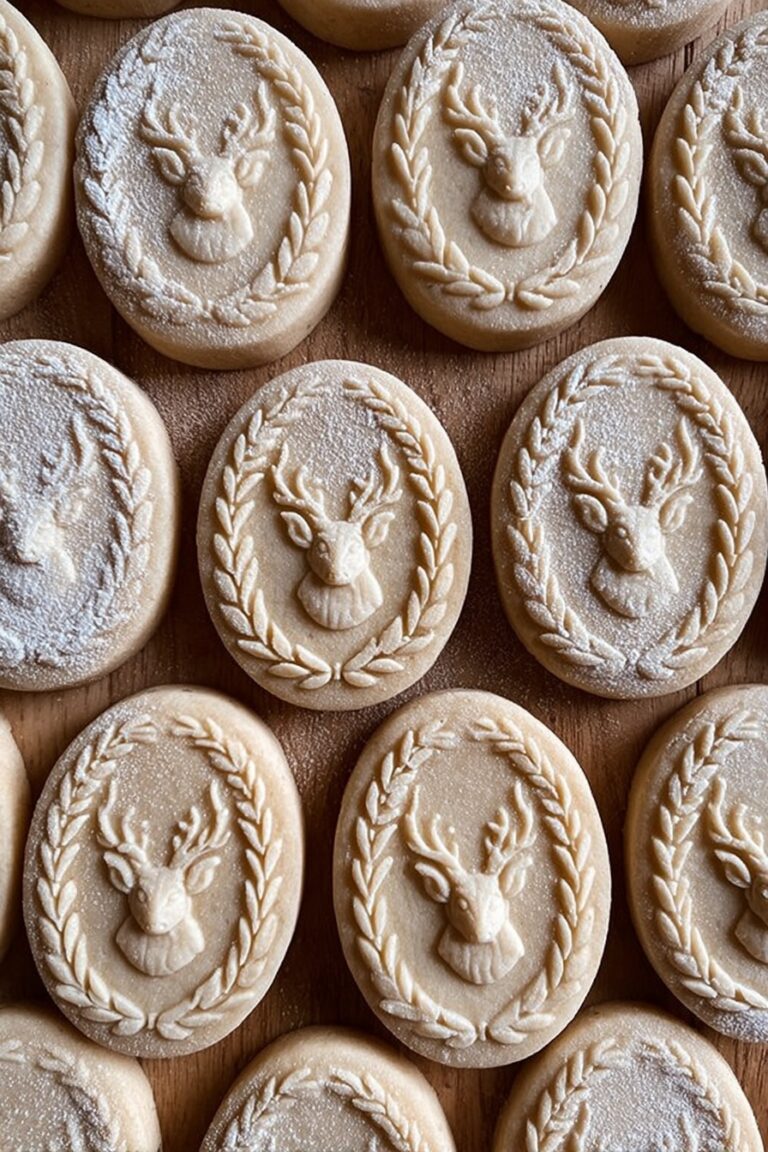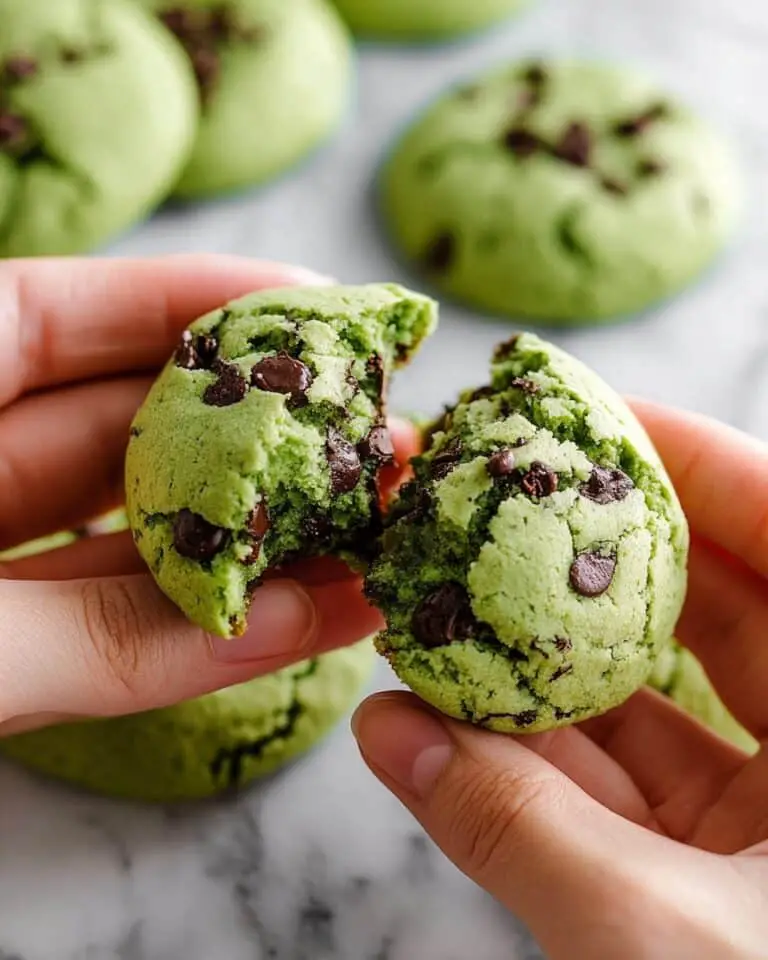If you’re looking to wow your guests or just treat yourself to something a little special, this Butternut Squash Hummus with Feta and Pomegranates Recipe is an absolute game-changer. Creamy, vibrant, with just the right amount of spice and freshness, it’s one of those dishes I always find myself coming back to. Trust me, once you try it, your snack game will never be the same.
Why You’ll Love This Recipe
- Unforgettable Flavor Combo: The sweetness of roasted butternut squash pairs beautifully with tangy feta and juicy pomegranate seeds for an irresistible bite.
- Simple Yet Elegant: With just a handful of ingredients and easy steps, this hummus feels fancy without the fuss.
- Perfect for Any Occasion: Whether it’s a cozy snack or part of a party spread, this hummus impresses every time.
- Versatile and Nutritious: Loaded with fiber, protein, and vitamins, it’s both delicious and good for you.
Ingredients You’ll Need
Each ingredient in this Butternut Squash Hummus with Feta and Pomegranates Recipe plays a special role to create balance and brightness. I always recommend using fresh, ripe produce and quality olive oil—trust me, it makes a difference you can taste.
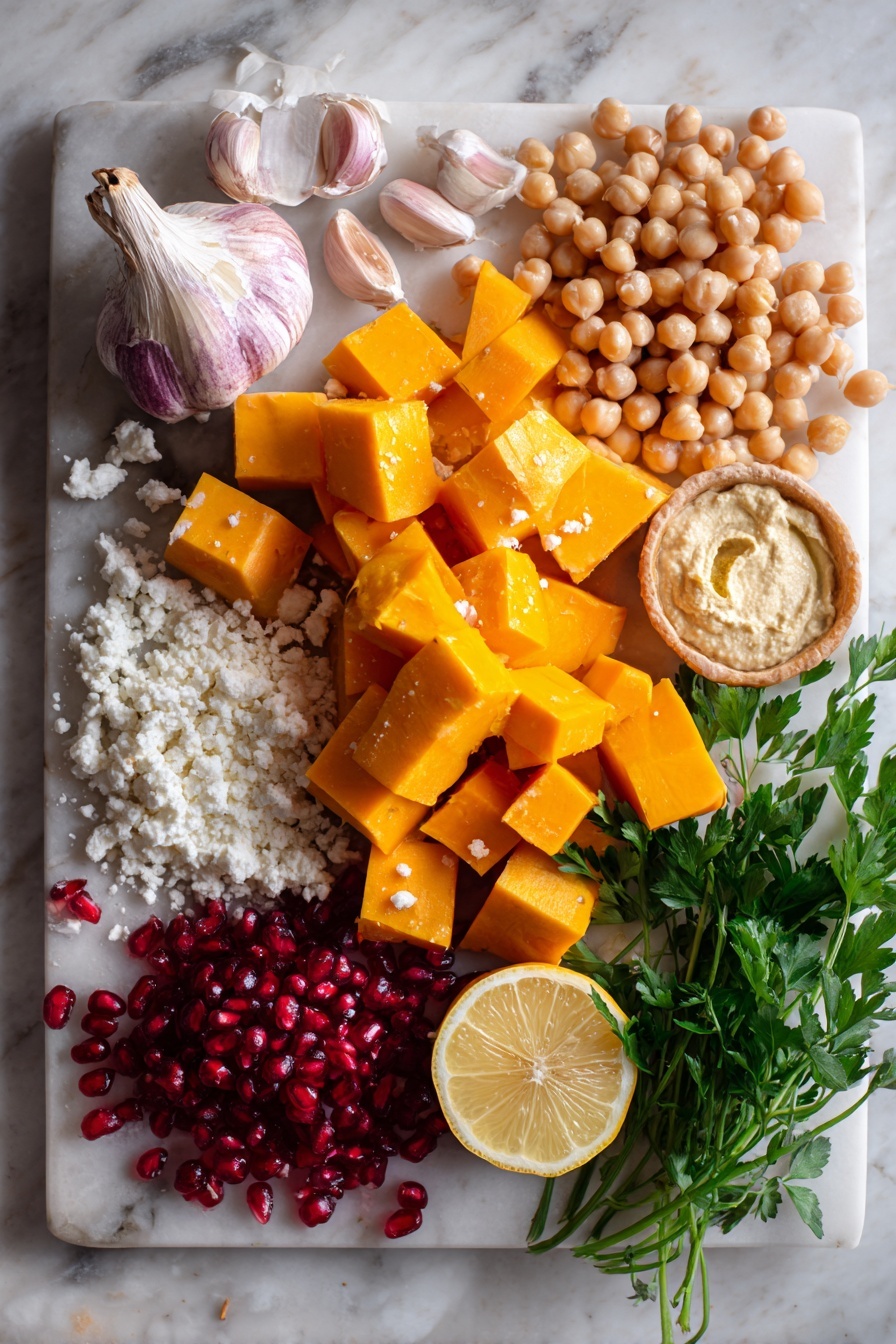
- Butternut Squash: Choose a firm, smooth-skinned squash for sweeter flavor and easier roasting.
- Garlic: Roasting softens the garlic’s bite and adds depth, so no raw garlic punches here.
- Chickpeas: Canned chickpeas work perfectly; just rinse well to cut down on the can taste.
- Tahini: Adds that signature hummus creaminess—look for a smooth, runny consistency for easy blending.
- Lemon Juice: Freshly squeezed is key to brighten the flavors and avoid bitterness.
- Spices (Cumin, Coriander, Cayenne): These bring warmth and just the right kick—adjust the cayenne if you’re spice sensitive.
- Sea Salt: Enhances all the flavors—feel free to add a bit more after tasting.
- Extra-Virgin Olive Oil: Use your best quality for drizzling and blending to enrich the texture and flavor.
- Water: Helps adjust the hummus to your preferred consistency—start small and add more as needed.
- Freshly Ground Black Pepper: Adds subtle aromatic heat and balances the sweetness.
- Pomegranate Arils: They’re fresh, jewel-like pops of color and tartness that elevate the dish.
- Feta Cheese: Crumbly and salty, feta cuts through the sweetness with a nice tang.
- Chopped Parsley: Fresh parsley brightens up the flavors and adds vibrant green color.
- Microgreens (Optional): For a delicate garnish and fresh texture without overpowering.
- Pita, Crackers, or Veggies: Perfect vehicles for scooping up this delicious hummus.
Variations
I love playing around with this Butternut Squash Hummus with Feta and Pomegranates Recipe depending on the season or what I have on hand. Feel free to adjust and make it your own—you’ll be surprised how a small tweak can change the entire vibe of the dish.
- Add Roasted Red Pepper: I sometimes blend in a roasted red bell pepper for a smoky sweetness that pairs beautifully with the squash.
- Dairy-Free Version: Swap feta for toasted nuts or seeds like pistachios or pumpkin seeds if you’re avoiding dairy.
- Herb Twists: Mint or cilantro can add a fresh, unexpected pop contrasting the spices in the hummus.
- Mild Spice: Tone down the cayenne or skip it altogether if you prefer a gentler hummus.
How to Make Butternut Squash Hummus with Feta and Pomegranates Recipe
Step 1: Roast the Butternut Squash and Garlic
Start by preheating your oven to 400°F. Toss your cubed butternut squash with a drizzle of olive oil, along with salt and pepper, then spread it out on a baking sheet lined with parchment. Wrap your garlic cloves in foil with a little olive oil and salt—this softens the garlic so it blends smoothly without overwhelming the dish. Roast everything for about 20 to 25 minutes, until the squash is tender and caramelized at the edges. You’ll know it’s ready when you can easily pierce a cube with a fork. This roasting step is key—it brings out the natural sweetness that makes this hummus shine.
Step 2: Blend Everything Together
Once your squash and garlic are cool enough to handle, toss them into your food processor along with the drained chickpeas, tahini, fresh lemon juice, cumin, coriander, cayenne, and sea salt. Start blending and slowly drizzle in the olive oil while the machine is running. This emulsifies everything into a silky smooth texture. If the hummus feels a bit thick, add water tablespoon by tablespoon until you reach your preferred consistency—creamy but still scoopable. Taste as you go, adjusting salt and spice until it suits your palate. Heads up: before the oil goes in, the cayenne can feel pretty spicy, but the olive oil tones it down perfectly.
Step 3: Assemble and Garnish
Transfer your hummus to a serving bowl and sprinkle it generously with pomegranate arils, crumbled feta cheese, chopped parsley, and if you’re feeling fancy, some microgreens. Finish off with a drizzle of olive oil to add a luscious sheen and extra richness. The vibrant colors and textures make this dish as beautiful as it tastes—perfect for sharing or keeping all to yourself!
Pro Tips for Making Butternut Squash Hummus with Feta and Pomegranates Recipe
- Perfect Roasting: Don’t overcrowd the pan when roasting squash—give each cube space to caramelize nicely.
- Garlic Magic: Roasting garlic in foil with olive oil tames its sharpness and makes it spreadable, so it melts into the hummus instead of overpowering it.
- Spice Balance: Add cayenne sparingly at first; you can always add more after blending to suit your heat preference.
- Smooth Texture: For ultra-creamy hummus, peel your chickpeas before blending—but don’t worry if you skip this step, it’s delicious either way.
How to Serve Butternut Squash Hummus with Feta and Pomegranates Recipe
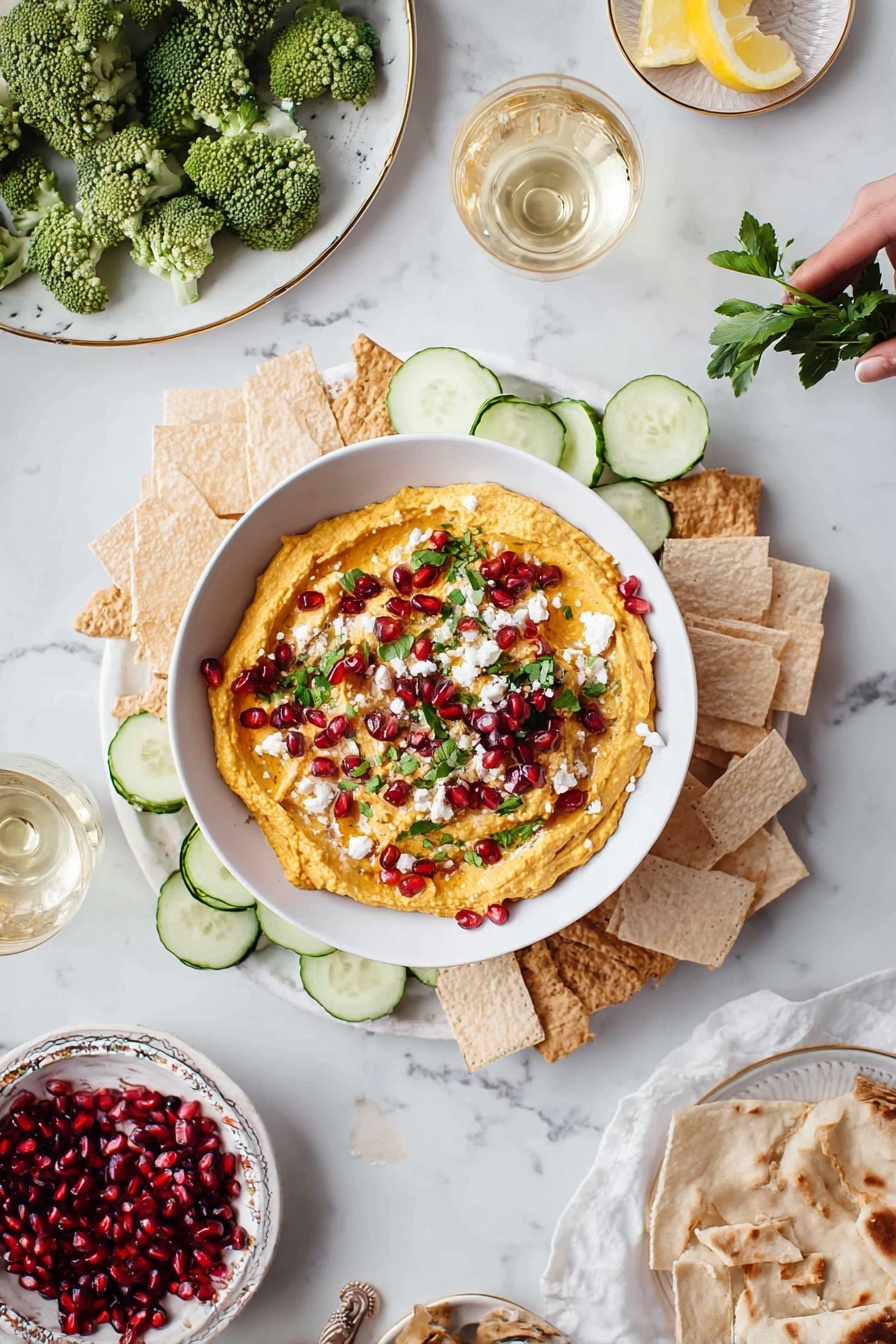
Garnishes
I love topping this hummus with pomegranate arils for a beautiful pop of ruby red and a juicy burst of tartness—plus crumbled feta to add that salty creaminess. The freshness of chopped parsley balances the whole thing out, and microgreens add an elegant touch if I’m feeling fancy. A final drizzle of good olive oil ties it all together and makes the dish look irresistible.
Side Dishes
This hummus pairs beautifully with warm toasted pita bread, crunchy crackers, or fresh veggie sticks like cucumber, carrot, and bell pepper. For something heartier, I serve it alongside grilled meats or falafel—my family goes crazy for this combo.
Creative Ways to Present
For parties, I like to spread the hummus in a wide shallow bowl and arrange the toppings in colorful sections—feta on one side, a cluster of pomegranate arils on another, then sprinkle parsley and microgreens artistically. It’s a showstopper and invites everyone to dig in. You can also drizzle a swirl of pomegranate molasses or sprinkle some toasted pine nuts for an extra touch.
Make Ahead and Storage
Storing Leftovers
I store leftover hummus in an airtight container in the fridge, where it keeps really well for up to 4 days. To keep it fresh, cover the surface with a thin layer of olive oil before sealing—that little trick helps prevent drying out and preserves flavor.
Freezing
Freezing works if you need to, but I find the texture changes slightly after thawing. If you do freeze it, scoop it into a freezer-safe container and thaw in the fridge overnight. Give it a good stir and maybe a splash of olive oil before serving to revive the creamy texture.
Reheating
Typically, I serve this hummus cold or at room temperature, but if you like it a bit warmer, I gently warm it in a bowl over a pot of simmering water or in very short bursts in the microwave—just enough so the olive oil loosens up but it doesn’t get hot. This keeps those fresh vibrant flavors front and center.
FAQs
-
Can I make this Butternut Squash Hummus with Feta and Pomegranates Recipe vegan?
Absolutely! Just omit the feta or swap it out for a vegan cheese alternative or toasted nuts to keep the salty, crunchy element. The hummus is flavorful enough on its own, so it still tastes amazing.
-
Can I use canned butternut squash instead of fresh?
Fresh roasted butternut squash offers the best flavor and texture, but if you’re in a pinch, canned squash (drained and patted dry) can work. Just be mindful that canned may be softer and less sweet, so you might want to add a pinch of sugar or roast some fresh garlic for extra depth.
-
Is this recipe spicy?
It has a gentle heat from cayenne, but it’s easily adjustable. Start with less cayenne if you prefer mild flavors. The roasting and olive oil help mellow the spice, creating a balanced, cozy warmth rather than a burn-your-mouth heat.
-
How long does this hummus last in the fridge?
Stored properly in an airtight container, it stays fresh for about 4 days. Just remember to cover the surface with olive oil to keep it moist and flavorful.
Final Thoughts
I absolutely love how this Butternut Squash Hummus with Feta and Pomegranates Recipe brings together such deliciously contrasting flavors and textures. The first time I made it, my whole family was hooked after just one bite—now it’s a staple at every gathering. You’ll find it’s simple enough for weeknight snacks but special enough to impress guests, making it one of my go-to recipes all year round. I can’t wait for you to try it and make it your own!
Print
Butternut Squash Hummus with Feta and Pomegranates Recipe
- Prep Time: 10 minutes
- Cook Time: 25 minutes
- Total Time: 35 minutes
- Yield: Serves 6 to 8 as an appetizer
- Category: Appetizer
- Method: Roasting
- Cuisine: Middle Eastern
- Diet: Vegetarian
Description
A vibrant and creamy Butternut Squash Hummus infused with warm spices and roasted garlic, topped with tangy feta cheese and juicy pomegranate arils. This appetizer combines the sweet and nutty flavors of butternut squash with the classic creamy texture of hummus, making it perfect for serving with pita, crackers, or fresh vegetables.
Ingredients
Roasted Vegetables
- 1 cup cubed butternut squash (½ inch cubes)
- 1 large or 2 medium garlic cloves
- Drizzle of olive oil (for roasting)
- Pinch of sea salt and freshly ground black pepper (for roasting)
Hummus Base
- 1½ cups cooked chickpeas, drained and rinsed
- ¼ cup tahini
- 3 tablespoons fresh lemon juice
- ½ teaspoon cumin
- ½ teaspoon coriander
- ½ teaspoon cayenne (less if sensitive to spice)
- ½ teaspoon sea salt
- ¼ cup extra-virgin olive oil
- ¼ cup water, or as needed
- Freshly ground black pepper (to taste)
Toppings & Serving
- ¼ cup POM POMS pomegranate arils
- ¼ cup feta cheese
- 2 tablespoons chopped parsley
- 2 tablespoons microgreens (optional)
- Drizzle of olive oil
- Pita, crackers, and/or veggies for serving
Instructions
- Preheat and Prepare Vegetables: Preheat your oven to 400°F (204°C) and line a baking sheet with parchment paper. Toss the cubed butternut squash with a drizzle of olive oil, salt, and pepper, then spread on the baking sheet. Wrap the garlic cloves in foil with a drizzle of olive oil and a pinch of salt, then place the foil packet on the baking sheet alongside the squash. Roast for 20 to 25 minutes until the squash is tender and the garlic is softened. Let cool slightly.
- Blend the Hummus: In a food processor, add the roasted butternut squash, peeled roasted garlic, cooked chickpeas, tahini, fresh lemon juice, cumin, coriander, cayenne, and sea salt. Process while gradually drizzling in the olive oil. Add water as needed to achieve a smooth, creamy consistency. Taste and adjust seasonings to your preference, noting that the olive oil helps mellow the spice.
- Assemble and Serve: Transfer the hummus to a serving bowl. Top with pomegranate arils, crumbled feta cheese, chopped parsley, and microgreens if using. Drizzle a bit of olive oil over the top. Serve immediately with toasted pita bread, crackers, and fresh vegetables for dipping.
Notes
- Roasting the garlic in foil helps mellow its flavor and adds creaminess to the hummus.
- Adjust the cayenne to taste according to your spice preference.
- If you prefer a thinner hummus, add more water gradually until desired consistency is reached.
- Microgreens are optional but add a lovely fresh visual and flavor contrast.
- Leftover hummus can be refrigerated in an airtight container for up to 4 days.
Nutrition
- Serving Size: 1/8 of recipe (about ¼ cup)
- Calories: 150 kcal
- Sugar: 3 g
- Sodium: 220 mg
- Fat: 8 g
- Saturated Fat: 1.5 g
- Unsaturated Fat: 6 g
- Trans Fat: 0 g
- Carbohydrates: 18 g
- Fiber: 5 g
- Protein: 5 g
- Cholesterol: 7 mg

